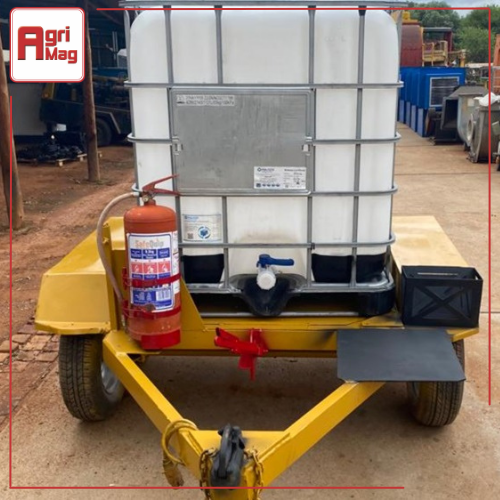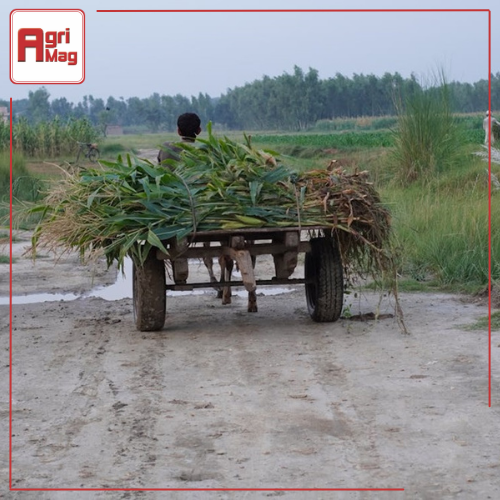
Mastering the Art of Loading and Unloading an Agricultural Trailer
Date: 21/03/2023
Loading and unloading an agricultural trailer might seem like a straightforward task, but doing it improperly can lead to accidents, damage to goods, and even injury. Whether you're transporting crops, livestock, or equipment, ensuring that your trailer is loaded and unloaded correctly is crucial for safety and efficiency. In this guide, we'll delve into the essential steps for properly loading and unloading an farming trailer in South Africa, highlighting key considerations to ensure a smooth and secure operation. Do you know you can get trailer spares and accessories on AgriMag? Click here to find the listed items.

Understanding the Importance of Proper Loading and Unloading of Agricultural Trailers:
Before diving into the specifics of loading and unloading, it's essential to understand why proper techniques are vital. A well-loaded trailer not only prevents damage to goods but also enhances road safety by maintaining stability and preventing accidents. Similarly, proper unloading ensures that goods are removed safely, minimising the risk of injury and damage to the trailer.
How to Load an Agricultural Trailer:
- Distribute Weight Evenly: Start by distributing the weight evenly across the trailer to prevent imbalance. Place heavier items towards the front and bottom to maintain stability during transit.
- Secure Loose Items: Ensure that all items are securely fastened to prevent shifting during transport. Use straps, ropes, or bungee cords to secure the load firmly in place.
- Consider Height Restrictions: Be mindful of height restrictions, especially when transporting tall items such as machinery or bales of hay. Check clearance heights before loading to avoid accidents.
- Protect Fragile Items: For delicate items such as fruits or vegetables, use padding or crates to prevent bruising or damage during transit.
- Double-Check Load: Before hitting the road, double-check the load to ensure everything is secure and properly positioned. Make any necessary adjustments to guarantee a safe journey.
Read: Overview of Agricultural Trailers: Types and Uses
How to Unload an Agricultural Trailer:
- Select Safe Unloading Area: Choose a flat, stable surface for unloading to prevent the trailer from tipping or shifting unexpectedly.
- Release Securing Mechanisms: Undo any straps, ropes, or securing mechanisms before unloading to facilitate a smooth process.
- Unload in Reverse Order: If possible, unload items in the reverse order of how they were loaded. This helps maintain stability and prevents sudden shifts in weight.
- Use Equipment if Necessary: For heavy or bulky items, consider using equipment such as forklifts or loaders to assist with unloading safely.
- Inspect Trailer After Unloading: Once the trailer is empty, conduct a thorough inspection to ensure no damage has occurred during unloading. Address any issues promptly to prevent future problems.
Read: Selecting the Right Agricultural Trailer for Your Farming Needs

Additional Tips for Safe Loading and Unloading:
- Know Your Trailer's Capacity: Before loading, familiarise yourself with the maximum weight capacity of your trailer. Overloading can lead to structural damage and compromise safety on the road.
- Balance the Load: Distribute the weight evenly from side to side as well as front to back. This helps maintain stability and prevents the trailer from swaying or fishtailing while in motion.
- Secure Loose Parts: Ensure that all trailer components, such as tailgates, ramps, and hitch connections, are securely fastened before loading and driving. Loose parts can pose a safety hazard and cause accidents.
- Follow Loading Guidelines: Some trailers come with specific loading guidelines provided by the manufacturer. Adhere to these guidelines to maximise safety and prevent damage to the trailer and its contents.
- Consider Weather Conditions: Take weather conditions into account when loading and unloading. Wet or muddy surfaces can make maneuvering the trailer more challenging and increase the risk of slips and falls.
- Use Proper Equipment: Invest in quality loading and unloading equipment, such as ramps, winches, and tie-down straps, to make the process smoother and safer. Proper equipment reduces the risk of injury and damage to goods.
- Train Personnel: Ensure that anyone involved in loading and unloading procedures is properly trained in safety protocols and knows how to operate equipment correctly. This reduces the likelihood of accidents caused by human error.
- Inspect Regularly: Regularly inspect your trailer for signs of wear and tear, such as rust, cracks, or loose bolts. Address any issues promptly to maintain safety and prevent breakdowns during loading and unloading.
Read: Safety Guidelines and Maintenance Tips for Agricultural Trailers
Mastering the art of loading and unloading an agricultural trailer is essential for farmers and agricultural workers. By following proper techniques and safety measures, such as distributing weight evenly, securing the load, and selecting safe unloading areas, you can ensure a smooth and efficient operation every time. Remember, safety should always be the top priority when loading and unloading to prevent accidents and protect both goods and personnel. So, whether you're transporting crops, livestock, or equipment, take the time to load and unload your agricultural trailer with care and precision. Are you aware that AgriMag sells accessories and spare parts for trailers? To view the listed items, click this link.
Categories:
Common category
Category Search:
Latest articles:

Why Planning Early for the Planting Season Pays Off

Why Winter Feed Management is Crucial for Livestock Health

How Smart Farming Technology is Revolutionising Agriculture


